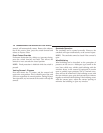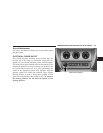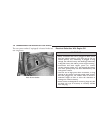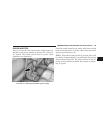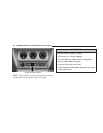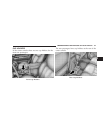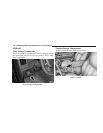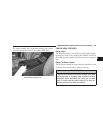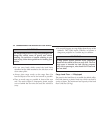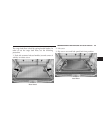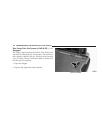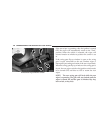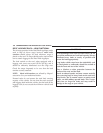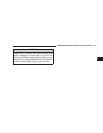
WARNING!
The weight and position of cargo and passengers can
change the vehicle center of gravity and vehicle
handling. To avoid loss of control resulting in per-
sonal injury, follow these guidelines for loading your
vehicle:
•
Do not carry loads which exceed the load limits
described on the label attached to the left door or left
door center pillar.
•
Always place cargo evenly on the cargo floor. Put
heavier objects as low and as far forward as possible.
•
Place as much cargo as possible in front of the rear
axle. Too much weight or improperly placed weight
over or behind the rear axle can cause the vehicle to
sway.
•
Do not pile luggage or cargo higher than the top of the
seatback. This could impair visibility or become a
dangerous projectile in a sudden stop or collision.
WARNING!
To help protect against personal injury, passengers
should not be seated in the rear cargo area. The rear
cargo space is intended for load carrying purposes
only, not for passengers, who should sit in seats and
use seat belts.
Cargo Load Floor — If Equipped
The panel in the load floor is reversible for added utility.
One side features a plastic lined tray which can hold a
variety of items. The maximum load capacity of the load
floor is 400 lbs (181 kg).
154 UNDERSTANDING THE FEATURES OF YOUR VEHICLE



